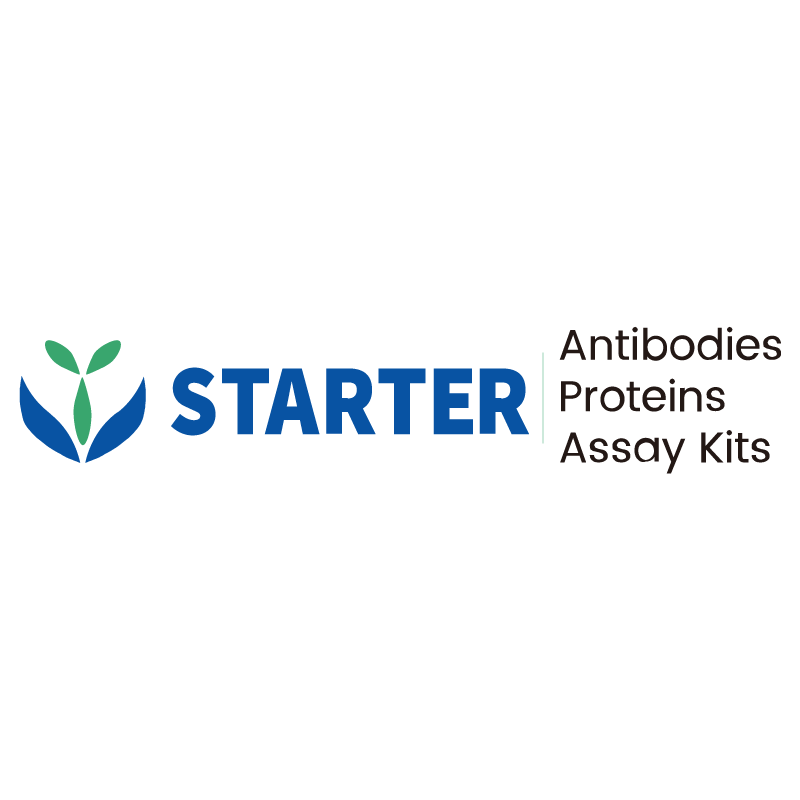WB result of CTCF Recombinant Rabbit mAb
Primary antibody: CTCF Recombinant Rabbit mAb at 1/1000 dilution
Lane 1: 293T whole cell lysate 20 µg
Lane 2: HeLa whole cell lysate 20 µg
Lane 3: K562 whole cell lysate 20 µg
Lane 4: MCF7 whole cell lysate 20 µg
Secondary antibody: Goat Anti-Rabbit IgG, (H+L), HRP conjugated at 1/10000 dilution Predicted MW: 83 kDa
Observed MW: 140 kDa
Product Details
Product Details
Product Specification
| Host | Rabbit |
| Antigen | CTCF |
| Synonyms | Transcriptional repressor CTCF; 11-zinc finger protein; CCCTC-binding factor; CTCFL paralog |
| Immunogen | Synthetic Peptide |
| Location | Nucleus, Chromosome |
| Accession | P49711 |
| Clone Number | S-1822-42 |
| Antibody Type | Recombinant mAb |
| Isotype | IgG |
| Application | WB, IHC-P, ChIP |
| Reactivity | Hu, Ms, Rt |
| Positive Sample | 293T, HeLa, K562, MCF7, NIH/3T3, RAW264.7, C6 |
| Purification | Protein A |
| Concentration | 0.5 mg/ml |
| Conjugation | Unconjugated |
| Physical Appearance | Liquid |
| Storage Buffer | PBS, 40% Glycerol, 0.05% BSA, 0.03% Proclin 300 |
| Stability & Storage | 12 months from date of receipt / reconstitution, -20 °C as supplied |
Dilution
| application | dilution | species |
| WB | 1:1000 | Hu, Ms, Rt |
| IHC-P | 1:50-1:1000 | Hu, Ms, Rt |
| ChIP | 1:20-1:50 | Hu |
Background
CTCF is a zinc finger protein that binds to specific DNA sequences known as CTCF-binding sites. It functions as a transcriptional regulator, chromatin organizer, and enhancer blocker. CTCF can either activate or repress gene expression, depending on the context and interacting proteins. It can bind to promoters, enhancers, and silencers to regulate transcription. CTCF is involved in the formation of chromatin loops and topologically associating domains (TADs). These loops and domains help organize the genome into functional units and regulate gene expression. CTCF can block the interaction between enhancers and promoters, preventing enhancer-mediated gene activation. This function is important for maintaining tissue-specific gene expression patterns. Mutations or abnormal expression of CTCF have been linked to various diseases, including cancer, developmental disorders, and neurological diseases.
Picture
Picture
Western Blot
WB result of CTCF Recombinant Rabbit mAb
Primary antibody: CTCF Recombinant Rabbit mAb at 1/1000 dilution
Lane 1: NIH/3T3 whole cell lysate 20 µg
Lane 2: RAW264.7 whole cell lysate 20 µg
Secondary antibody: Goat Anti-Rabbit IgG, (H+L), HRP conjugated at 1/10000 dilution Predicted MW: 83 kDa
Observed MW: 140 kDa
WB result of CTCF Recombinant Rabbit mAb
Primary antibody: CTCF Recombinant Rabbit mAb at 1/1000 dilution
Lane 1: C6 whole cell lysate 20 µg
Secondary antibody: Goat Anti-Rabbit IgG, (H+L), HRP conjugated at 1/10000 dilution Predicted MW: 83 kDa
Observed MW: 140 kDa
Immunohistochemistry
IHC shows positive staining in paraffin-embedded human tonsil. Anti-CTCF antibody was used at 1/50 dilution, followed by a HRP Polymer for Mouse & Rabbit IgG (ready to use). Counterstained with hematoxylin. Heat mediated antigen retrieval with Tris/EDTA buffer pH9.0 was performed before commencing with IHC staining protocol.
IHC shows positive staining in paraffin-embedded human lung adenocarcinoma. Anti-CTCF antibody was used at 1/50 dilution, followed by a HRP Polymer for Mouse & Rabbit IgG (ready to use). Counterstained with hematoxylin. Heat mediated antigen retrieval with Tris/EDTA buffer pH9.0 was performed before commencing with IHC staining protocol.
IHC shows positive staining in paraffin-embedded human colon cancer. Anti-CTCF antibody was used at 1/50 dilution, followed by a HRP Polymer for Mouse & Rabbit IgG (ready to use). Counterstained with hematoxylin. Heat mediated antigen retrieval with Tris/EDTA buffer pH9.0 was performed before commencing with IHC staining protocol.
IHC shows positive staining in paraffin-embedded human breast cancer. Anti-CTCF antibody was used at 1/50 dilution, followed by a HRP Polymer for Mouse & Rabbit IgG (ready to use). Counterstained with hematoxylin. Heat mediated antigen retrieval with Tris/EDTA buffer pH9.0 was performed before commencing with IHC staining protocol.
IHC shows positive staining in paraffin-embedded mouse liver. Anti-CTCF antibody was used at 1/1000 dilution, followed by a HRP Polymer for Mouse & Rabbit IgG (ready to use). Counterstained with hematoxylin. Heat mediated antigen retrieval with Tris/EDTA buffer pH9.0 was performed before commencing with IHC staining protocol.
IHC shows positive staining in paraffin-embedded rat stomach. Anti-CTCF antibody was used at 1/1000 dilution, followed by a HRP Polymer for Mouse & Rabbit IgG (ready to use). Counterstained with hematoxylin. Heat mediated antigen retrieval with Tris/EDTA buffer pH9.0 was performed before commencing with IHC staining protocol.
ChIP
Chromatin immunoprecipitation (ChIP) was performed on HeLa cells cross – linked with 1% formaldehyde for 10 min, then chromatin was fragmented by sonication.
Parallel reactions used CTCF Recombinant Rabbit mAb (S-1822-42) and Rabbit mAb IgG Isotype Control (SDT-R173) at 1:50 for
immunoprecipitation.
Post - immunoprecipitation, both samples were washed, eluted, and cross - links reversed. Purified DNA was analyzed by qPCR.
qPCR (%input: immunoprecipitated DNA/input DNA)
showed the enrichment of INS-Igf2, MYC and SAT-α in
CTCF Recombinant Rabbit mAb (S-1822-42)-
immunoprecipitated sample.


